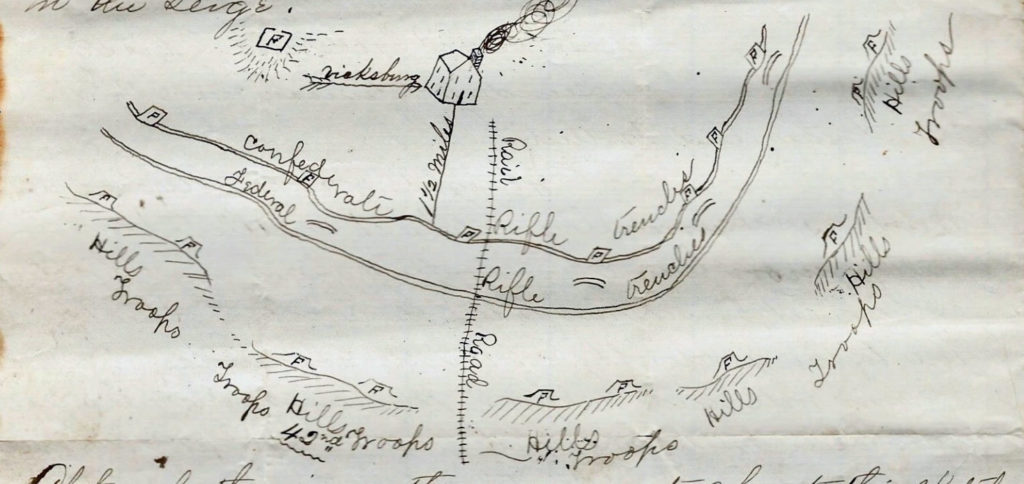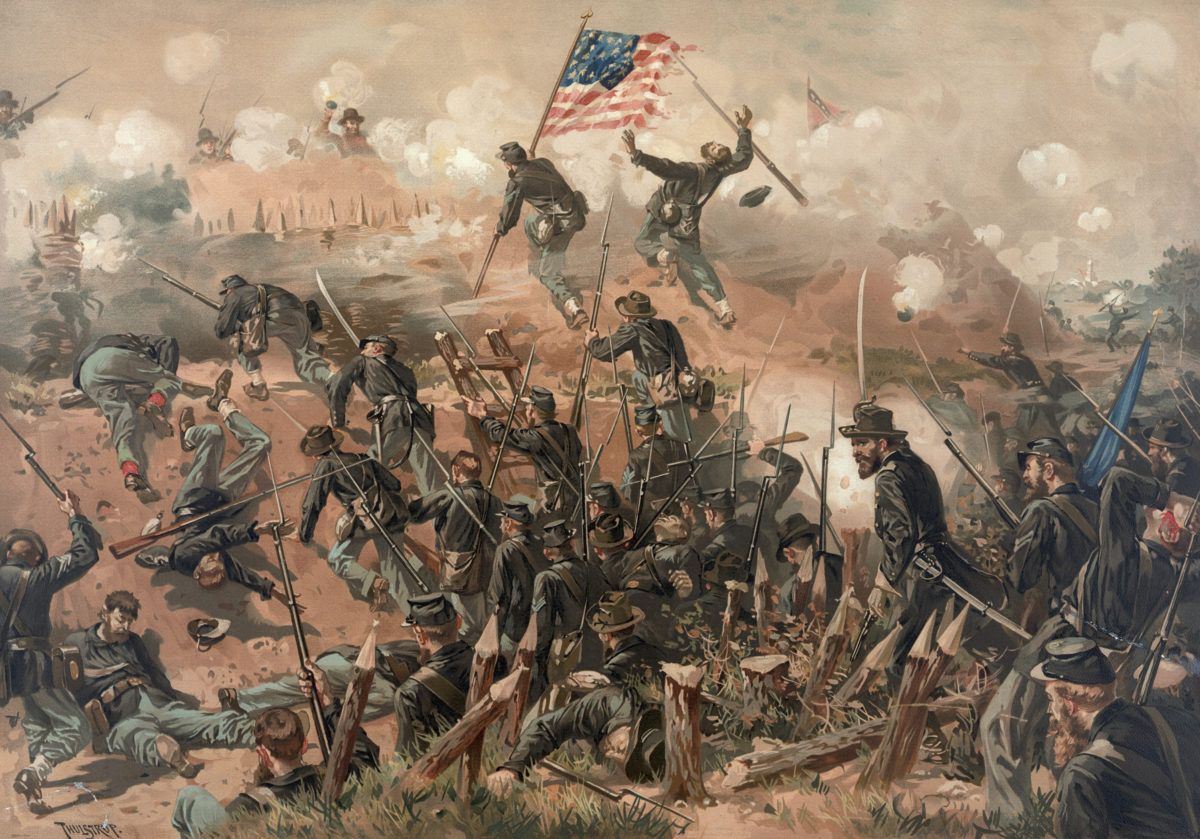Jasper Stansbury Ross served as the 1st sergeant of Company A of the 42nd Ohio Infantry until mid-1862, when he was offered a commission as 2nd lieutenant of the company. He later (May 1863) rose in rank to be its captain and adjutant for the regiment. He mustered out of the regiment on Sept. 30, 1864, after three year’s service.
Jasper was the youngest child of Samuel Iverson Ross and Margaret Stansbury of Carroll County, Ohio. After the war, Jasper returned to Ohio to teach at his alma mater, the coeducational Western Reserve Eclectic Institute (later Hiram College).
In this letter home to his parents, Ross describes the scene around him as the 42nd Ohio Infantry participated in the Siege of Vicksburg, which took place May 18, 1863, to July 4, 1863.
This letter is one of thousands of letters transcribed by William Griffing as part of his online repository of Civil War letters, Shared & Spared. For more of the compelling letters he makes available to read, visit the Shared & Spared Facebook page.
GET HISTORY’S GREATEST TALES—RIGHT IN YOUR INBOX
Subscribe to our HistoryNet Now! newsletter for the best of the past, delivered every Monday and Thursday.
In rear of Vicksburg, Mississippi
Sunday afternoon, June 14th 1863
Dear Father and Mother,
A bright, warm afternoon and as I generally make it a rule to have a little more leisure on Sundays than any other day, I have set me down to devote a portion of that leisure to the good folks at the old homestead.
I am well and happy. My duties in the office have been quite arduous and constant for the past week owing to the great amount of back work which accumulated during the 40 days campaign, in which I was without desk or tent. But with the assistance of the Sergeant Major, I have brought it all up, and I am quite glad.
We have not yet taken the “Hill City.” The enemy hold out well and we hope to hold on well. There is leisure artillery and infantry firing almost constantly. It is considerable heavier now that ordinarily. The batteries on the hill, about 200 yards in front of me are firing at about the rate of three rounds per minute, and with the explosion of the shells, there is pretty near a constant discharge and explosion. The infantry firing is heavier than usual. I should think I hear sixty rounds per minute, if not more. I will try to give you some idea of the way matters move along here in the siege.
We have men in the rifle pits night and day; about one man every three feet. They shoot through little holes in the banks of the rifle pits—so do the rebels. At night the musketry firing ceases except where we are advancing our line of trenches or planting artillery. Then the rebels fire at the workmen and our troops protect them by returning the fire. But the enemy seldom fire their artillery unless they deem it exceedingly necessary, except also from a fort a good piece back on a hill (I marked it). From this they occasionally throw some very large shells.

Sketch of Siege Lines in the rear of Vicksburg, June 14, 1863.
Ross drew this map of the siege lines for his parents, explaining the sketch this way. “Although there is nothing accurate about this sketch, yet it gives you a pretty good idea of the general position of the forces. Perhaps you do not see the advantage we have. It is this. You see the squares along the rebel lines marked F; they are rebel forts. You see that our rifle trenches are close to them; about an average of 200 yards or less. Our infantry in these trenches can shoot right through the port holes in the forts and kill the men who attempt to fire and load the cannons in the forts. But our batteries are back on the hills at long rifle range, and it is only once in awhile they can hit any of our artillerymen. Our forts (also marked F) are rough, hastily thrown up, and are only three-ended. Some short little rifle pits along the line are right close up to the enemy works. I have guessed at them and marked them on the sketch.”
In the ravines close behind our batteries lay the reserve troops, or a good part of them. There are other troops lying in other ravines still farther. The 42nd [OVI] is in the first ravine behind the batteries. I guessed at its place and marked it as near as I could.
We have received large reinforcements and I hope we may get the whole “trap.” We have all kinds of rumors everyday about deserters coming to our lines and the stories they tell. Also about our capturing couriers from Johnston to Pemberton and others from Pemberton to Johnston, and about the dispatches they carried. But the trouble is, we never know what to believe. But about war, I will conclude.
I believe I received a letter from Sarah Anne which I did not answer. But it is so with nearly all my correspondents except at home. It is a week today since I got any word from home. But I presume it is the fault of the mail or it may be you did not write me.
I saw Marion the other day. He gave me a visit. I also went to the 80th Ohio and saw Joe Reed, Sam Porter, James Reed, and Fred Buell. But I only stayed a few minutes. I almost forgot to mention that I saw Ben Sonders and Bob Gill.
Tell Etna to write me another letter and give her and Flora my love. Also Enoch.
Ever your son, — Jasper
Direct to 42nd Ohio, Osterhaus’ Division, McClernand’s Corps, In rear of Vicksburg.
historynet magazines
Our 9 best-selling history titles feature in-depth storytelling and iconic imagery to engage and inform on the people, the wars, and the events that shaped America and the world.


